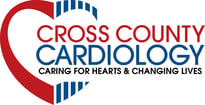There exists a prevailing aspect of medical care, acknowledged intensively by those submerged in its practice, but left mostly untouched or poorly understood by various individuals in the medical realm: Venous disease treatment. Over 12 years ago, we resolved to navigate deeper into this field, sprouting from our expertise in cardiology and peripheral vascular arterial disease.
Research reveals venous diseases are more common than arterial diseases, yet the conventional lens remains affixed towards the latter. This misguided spotlight left a gap which we became determined to fill. We mustered our tenacity and navigated through the rough terrains of comprehension, awareness, and effective treatments, positioning ourselves as custodians of this overlooked yet critical medical field.
According to the American Heart Association, chronic venous diseases (CVDs) afflict approximately 15% of men and 30% of women. These numbers are substantial, considering that venous diseases often rob victims of their ability to lead normal lives, causing leg pain, inflammation, and swelling. In worst scenarios, patients may also suffer from skin deformities and ulcerations.
But what is the primary cause of these diseases? Genetics influences one’s likelihood of falling prey to venous diseases. Also, women are more prone to this class of diseases than men, especially after pregnancy. Obesity and occupations requiring one to either stand for long durations or remain seated are also factors, but the most crucial factor is a family history of this condition.
Venous diseases treatment typically begins with supportive compression stockings. Although these stockings help diminish leg congestion, they do not eliminate the problem and are quite often uncomfortable to wear year-round due to the weather.
Given the variety of these diseases, a one-size-fits-all approach to the treatment bears minimal fruit. In response to that, we've resorted to a personalized approach, outlining the treatment on individual symptoms and the location of the vein. Treatments may involve thermally-ablating veins through catheters or injecting varithena foam. This approach, although rigorous, has been largely effective in minimizing the extent of procedures that will provide the most benefit.
The consequences of the undervaluing venous diseases treatment are laid bare in sufferers' everyday life. The fear of looming pain or inflammation dangles in the hearts of millions. However, adopting a broader, deeper perspective on venous diseases can effectively ameliorate the situation. We rest at the frontline in pioneering this perspective shift, engaging our experience and proficiency to yield a healthier society.
Sources:
- "Vein Disease Affects up to 30% of Population." American Heart Association, July 03, 2014.




